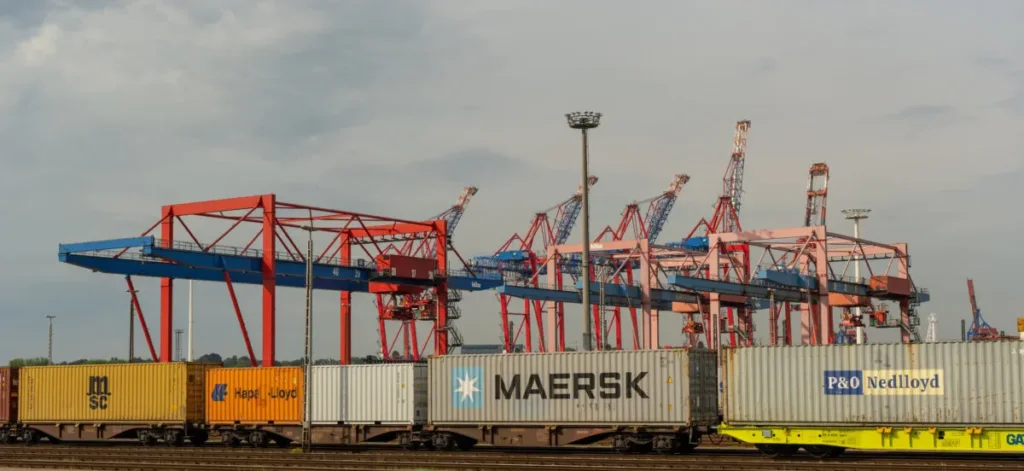From 25 June, the TA5 vessel will avoid the port of Rotterdam, instead heading directly from Felixstowe to Hamburg. The decision is being explained by “current operational constraints” that make it much more difficult to maintain a regular service. It is yet another – and this time more decisive – response from the shipowner to the continuing capacity problems at Europe’s largest container port.
Downtime and surcharges
Already in May, Maersk introduced an additional fee – Inland Peak Surcharge (IPI/IPE) – related to congestion in the ports of Rotterdam and Antwerp. The surcharge of €10 per TEU applies to all forms of inland transport (road, rail, barge and intermodal), both carried out by Maersk and within the multi-carrier inland services.
The new fee applies to shipments to and from deep-water terminals in both ports and, according to the shipowner, will be in force as long as necessary to ensure the availability of adequate shipping capacity in the face of declining efficiency of land operations.
Mediterranean Shipping Co. (MSC) warned customers of extended transit times for two of its services back in June, citing “continued difficult market conditions causing bottlenecks and delays across the supply chain.”
Ships are waiting in the roadstead
According to data from the Seasearcher platform (Lloyd’s List Intelligence), in the first week of June, as many as 11 ships were waiting at anchor outside the port of Rotterdam, waiting for permission to enter the terminal. The situation is no better in the other main ports of the region – there were 6 vessels in the roadstead in Hamburg and 5 in Antwerp.
Although Antwerp has managed to avoid the worst of the congestion in early May (due to public and private protests), delays remain significant. According to Drewry’s analysis, average waiting times at the quayside rose from 32 hours in week 13 of the year to 44 hours in week 20 , an increase of 37% .
In Hamburg, some container operators are reporting delays of up to six days , making it one of the hardest-hit ports in the region. Asian carriers, including HMM, are also regularly reporting ongoing bottlenecks.
Why are ports congested?
Lloyd’s List Intelligence analysts attribute the reasons for the congestion to a combination of factors, such as: high demand for shipping, profound changes in the structure of shipping alliances (the collapse of 2M and the creation of Gemini Cooperation), hydrological problems (low water levels), as well as a series of strikes in both the public and private sectors.
According to Drewry analysts, the continuing accumulation of negative factors may cause further disruptions at least until the end of the peak transport season, i.e. until August 2025. However, experts point out that the situation may normalise if there are no further disruptions (e.g. strikes) and the market also begins to stabilise in Asia and North America.








